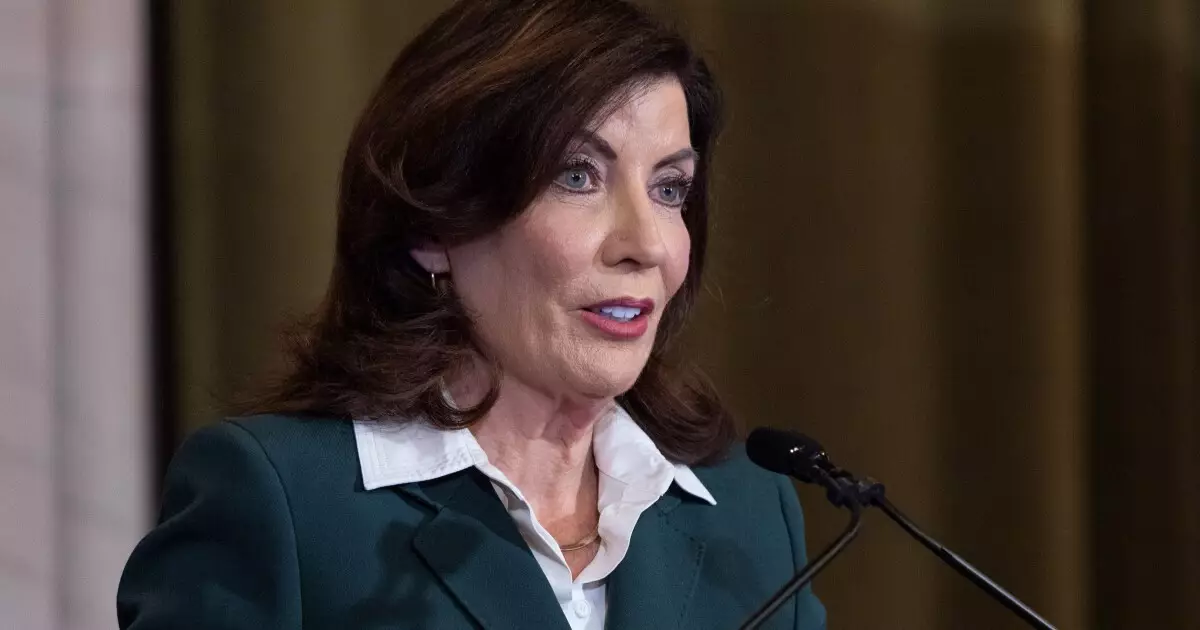The contentious issue of congestion pricing in New York has recently gained renewed scrutiny as the political climate shifts dramatically with the election of Donald Trump. With a vocal promise to terminate the pricing plan in his first week back in office, the future of this important financial strategy for public transport has been thrown into uncertainty. New York City Comptroller Brad Lander has voiced concerns about the potential loss of a crucial $15 billion investment that congestion pricing was slated to generate. His remarks signal a profound anxiety among city lawmakers who recognize that inaction could jeopardize vital funding for the Metropolitan Transportation Authority’s (MTA) capital plan.
The primary concern stems from the abrupt halt imposed by Governor Kathy Hochul just weeks before the congestion pricing plan was set to take effect. Officially, the pause was termed “temporary,” leaving many to speculate that the governor was biding her time until after the election. The governor’s decisions have not only delayed the implementation of a plan that could ease congestion but have left legislators grappling with the consequences of potential political fallout among exurban drivers who would be directly affected by the tolls.
The feasibility of raising funds through congestion pricing is central to the MTA’s capital plan, which faces a significant $16 billion shortfall due to the paused implementation. The MTA’s current predicament places immense pressure on state lawmakers to seek alternative funding solutions, a prospect that appears bleak given the existing fiscal constraints facing the city and state. Hochul has hinted at examining alternatives, including reducing the initially proposed tolls from $15 to $9, without the need for a lengthy environmental review process.
While this proposition might make the plan more palatable for passenger drivers, it simultaneously creates complications: truck and taxi drivers would face increased toll charges, and the proposed removal of discounts aimed at low-income drivers raises substantial questions of equity. Given that the congestion pricing plan was designed to generate $1 billion annually, any alteration will require a delicate balancing act between broad-based support and fiscal viability.
The path to actualizing congestion pricing is fraught with red tape, particularly when it comes to the necessary federal approvals. The role of the Federal Highway Administration in this process cannot be understated, as they hold the ultimate authority in granting the required approval letters. If significant delays persist, there is a very real possibility that the incoming Trump administration could rescind the letter, effectively quashing the congestion pricing initiative before it ever sees the light of day. This bureaucratic back-and-forth creates an environment ripe for political strife and uncertainty among constituents who rely heavily on efficient transit systems.
Federal intervention could set a problematic precedent for New York’s future endeavors in infrastructural reform. As observed by Lander, every month without a functioning congestion pricing system heightens the fiscal crisis, making it precarious for the MTA to navigate its ambitious $69 billion capital plan for 2025-2029, which already requires an additional $33 billion in new funding.
A Need for Strategic Legislative Action
To avoid further disarray, state legislators must take decisive action in the coming weeks and months. The landscape requires immediate strategic planning to determine a clear path forward for congestion pricing, providing the MTA with the necessary leverage to advocate for federal support. As the state continues to garner congressional seats under Democrat leadership, the potential opportunity can not be overlooked. However, the realities of political dynamics, contrasting public opinions on tolling, and external economic pressures present formidable challenges.
Given the ongoing pressures and evolving political narratives, the urgency surrounding the congestion pricing plan is palpable. The stakes are high, not just for New York City’s transit system but for broader questions concerning urban infrastructure funding and the implications of political will in enacting necessary reforms. The future of congestion pricing thus remains ensnarled in a dense web of political posturing, economic feasibility, and public interest, embodying the quintessential tension between local governance and national politics.

